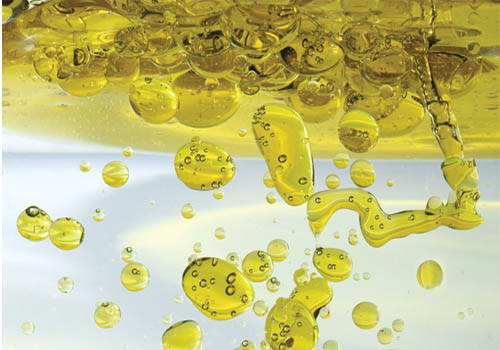"We like to support the local market and show customers and chefs what we are able to get delivered from the local region, so we use extra virgin olive oil from Syria and organic olive oil from Jordan and Turkey."
The Grosvenor House sources its extra virgin olive oil from Jordan, France, Italy and Australia as "each country's oil has a definite and noticeable taste, so this adds a certain quality to the food," comments Lannes.
Restaurants are requesting more specialist products to differentiate their cuisines from competition according to the region's suppliers.
Al Murooj Rotana uses a variety of oils including specialist Italian Tangerine Olive Oil and Australian Dandaragan Olive Oil, which "beats many Italian olive oils in quality and flavour", says Textor.
The increased availability of olive oil products is also contributing to menu development and innovation explains Munier.
"We continue to improvise and diversify our menus because the number of uses for this ingredient seems to be increasing, both for its unique flavours and excellent health values that contribute to a healthier lifestyle.

Advertisement
The Middle East olive oil market is maturing so quickly that it is rapidly catching up with the European market comments Jordan Valley Marriott Dead Sea Resort & Spa executive sous chef Roberto Kunitz.
"In some Michelin-starred restaurants in Europe you can sometimes find olive oil sommeliers and whole menus, from starter to dessert, specifically designed using different kinds of olive oil.
"It will not be long before we see the same in this region," he said.
Although there are now many products available on the market, the challenge "is to spot the ones with the best flavour and quality, amongst all these competitive alternatives", says Munier.
Arabic cuisine, like traditional Mediterranean-style cuisine uses a lot of olive oil as a base ingredient, especially for sauces and dressings and so demand will continue to increase says Gube.
"Healthy meals that are low in cholesterol and sodium have been becoming increasingly popular in recent times and consequently the demand for olive oil is rocketing."
Recent technical advances made by a group of young Spanish chefs have changed the age-old image of olive oil from the guest of honour in salads, fried foods and cooked dishes to the star ingredient in ice-creams, sorbets and semolinas.
• Three-star Michelin chef Berasategui developed olive oil ice cream.
"Extraction techniques and olive oil quality are improving year by year, to the extent that we can now devise recipes on the basis of the varied aromas and flavours of olive oil - acidity and bitterness, and that includes deserts."
• Fifteen years ago, chef Ange Garcia of London-based tapas restaurant, Albero & Grana, created the first olive oil sorbet.
"We are the true pioneers of sorbets. It was born because we were keen to replace the cream and butter with olive oil to get a smoother texture."
• Other important innovations in recent years have been the use of new thickeners and emulsifiers, as well as liquid nitrogen.
Dani Garcia, dubbed the "king of cold", the chef at Calima restaurant in Magala, created an olive oil-based semolina.
"Spraying olive oil over gas at -195°C (-319°F) extracts tiny golden pearls of pure virgin olive oil that doesn't leave a single trace of fat behind on the tongue."









 Search our database of more than 2,700 industry companies
Search our database of more than 2,700 industry companies









